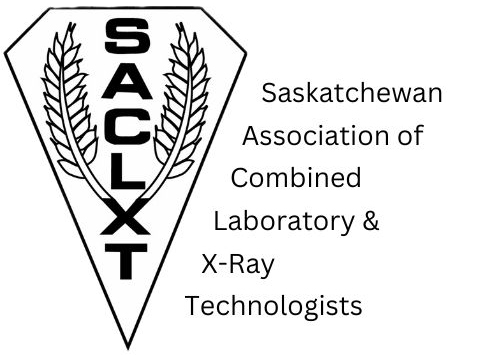About
Mission Statement
- To be the professional membership body that promotes the members professional and educational needs for the ultimate care and safety of the patients we serve and the physicians we serve.
- To provide good relations between its members, other health professionals, and the community we serve.
HISTORY
In the early 1940’s, it became apparent the laboratory and x-ray services in small rural hospitals were usefully inadequate. Although skilled technicians were needed in these hospitals, the volume of work could not warrant the hiring of both qualified laboratory and x-ray technicians.
In response to this need for skilled workers, the Division of Hospital Administration and Standards, Saskatchewan Department of Public Health initiated the development of an introductory course for “Combined Technicians”. The course was developed in cooperation with the Division of Laboratories, the Department of Education and two Federal Agencies – the Department of Veterans affairs and the Canadian Vocational Training Program.
The Combined Technician training course was designed to provide 3 months of concentrated laboratory training and 3 months of concentrated x-ray training. Students would obtain practical experience in Regina Hospitals and receive didactic instruction in theory and techniques at the Provincial Laboratory. Graduates would be certified by the Province of Saskatchewan. The course was the only project of its kind in Canada, to be sponsored by a Provincial Health Department.
The first class of 20 students commenced training on October 6, 1946. All of the students were returned service personnel (Veterans). Tuition was free. Laboratory training was supervised by Dr. Riddell, director of the Division of Laboratories and Department of Public Health. X-ray training was supervised by Dr. A. E. Perry, Radiologist at the Grey Nun’s Hospital, Regina, Sk. At least 19 students completed the training successfully and obtained employment as Certified Combined Technicians.
Certified Combined Technician (CCT) training was offered again in 1947. Due to lack of funding the Canadian Vocational Training Program was unable to offer the course in 1948. Training commenced again in 1949 and has offered courses each year since.
In 1953-54 the course was moved from the Provincial Lab to Regina College. The practical training sites also moved at this time, from the Regina Hospitals to smaller rural hospitals. Here the training experience could approximate that of the CCT’s work situation more closely.
By 1964, 256 Combined Technicians had been certified by the Division of Hospital Administration and Standards. The Division, at this time, transferred responsibility for the program to the Provincial Department of Continuing Education, now Advanced Education and Manpower. This department moved the program to Saskatoon to the Saskatchewan Institute of Applied Arts and Sciences (SIASS), then known as Saskatchewan Institute of Applied Science and Technologies (SIAST). The first CCT class at SIASS commenced training in January of 1965.
The CCT program continued to operate in the Health Sciences Division of SIAST from 1965 until 1998 at which time the course title changed from Certified Combined Technician to Certified Combined Laboratory and X-ray Technician.
The Saskatchewan Association of Combined Laboratory and X-ray Technicians (SACLXT) formed in 1987 when it became apparent that a formal method of information sharing, continued education, and structure were needed. The first formed executives designed constitutions and bylaws that covered the needs of combined laboratory and x-ray technicians. Combined Laboratory and X-ray Technicians were encouraged to join the Association, but it was not a mandatory requirement of employment. The SACLXT Constitution and Bylaws continue to be reviewed and revised annually.
From 1947 to 2007, the CLXT program continued to operate as a one year certificate course at SIAST in Saskatoon. In October 2004, SIAST held a comprehensive curriculum validation for the CLXT program that involved a diverse cross-section of industry stakeholders and past graduates of the program. Many issues were identified. As a result of this, a task force was formed to revamp the program.
In October 2004, a comprehensive curriculum validation for the CLXT program took place involving a diverse group of stakeholders and post graduates of the CLXT program. An extensive review of all of the components of the SIAST program resulted in many changes. These changes included the program length increase from 56 weeks (1year) to 62 weeks (2 year). The course title changed from Combined Laboratory and X-ray Technician to Combined Laboratory and X-ray Technology and the exit credential changed from certificate to diploma consistent with SIAST policy.
2006 marked the 60th Anniversary of the initiation of the Certified Combined Technicians training in Saskatchewan. Approximately 1300 technicians have graduated and become certified. These Technicians have played a unique role in the delivery of Rural Health Care.
2010 marked the first class to graduate from the Diploma program at SIAST. We are continuing to grow as an association and be recognized not only provincially but nationally for our skills and portability between several disciplines – lab, x-ray and ECG.
There remains to be only two technical schools in all of Canada that offer training to CLXT’s they are Saskatchewan Polytechnic in Saskatchewan and NAIT (Northern Alberta Institute of Technology) in Alberta.
Currently the SACLXT has a membership of approximately 365. At this time it is not mandatory to belong to the SACLXT to work as a combined laboratory and x-ray technician in Saskatchewan.
We look with satisfaction at our past accomplishments. We look proudly to the future, secure in the knowledge that combined laboratory and x-ray technology is a vital and essential profession. We continue to grow as a membership. Our skills and diversity continue to change allowing for our members to expand their employment possibilities.
